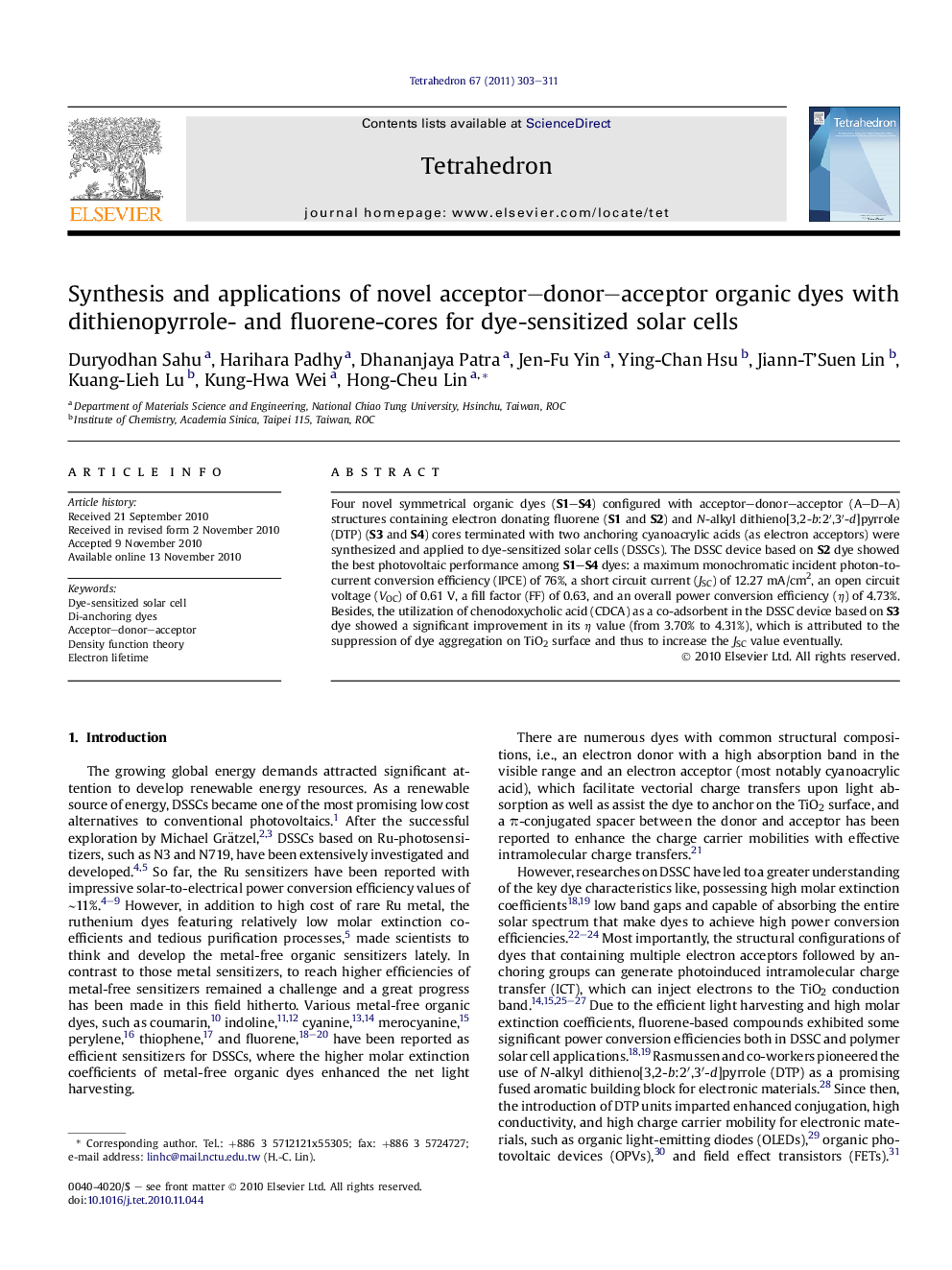| کد مقاله | کد نشریه | سال انتشار | مقاله انگلیسی | نسخه تمام متن |
|---|---|---|---|---|
| 5223006 | 1383474 | 2011 | 9 صفحه PDF | دانلود رایگان |

Four novel symmetrical organic dyes (S1–S4) configured with acceptor–donor–acceptor (A–D–A) structures containing electron donating fluorene (S1 and S2) and N-alkyl dithieno[3,2-b:2′,3′-d]pyrrole (DTP) (S3 and S4) cores terminated with two anchoring cyanoacrylic acids (as electron acceptors) were synthesized and applied to dye-sensitized solar cells (DSSCs). The DSSC device based on S2 dye showed the best photovoltaic performance among S1–S4 dyes: a maximum monochromatic incident photon-to-current conversion efficiency (IPCE) of 76%, a short circuit current (JSC) of 12.27 mA/cm2, an open circuit voltage (VOC) of 0.61 V, a fill factor (FF) of 0.63, and an overall power conversion efficiency (η) of 4.73%. Besides, the utilization of chenodoxycholic acid (CDCA) as a co-adsorbent in the DSSC device based on S3 dye showed a significant improvement in its η value (from 3.70% to 4.31%), which is attributed to the suppression of dye aggregation on TiO2 surface and thus to increase the JSC value eventually.
Four novel symmetrical organic dyes (S1–S4) configured with acceptor–donor–acceptor (A–D–A) structures containing electron donating fluorene (S1 and S2) and N-alkyl dithieno[3,2-b:2′,3′-d]pyrrole (DTP) (S3 and S4) cores terminated with two anchoring cyanoacrylic acids (as electron acceptors) were synthesized and applied to the applications to dye-sensitized solar cells (DSSCs). The DSSC device based on S2 dye showed the best photovoltaic performance with a short circuit current (JSC) of 11.91 mA/cm2, an open circuit voltage (VOC) of 0.61 V, a fill factor (FF) of 0.66, and an overall power conversion efficiency (η) of 4.83%Figure optionsDownload as PowerPoint slide
Journal: Tetrahedron - Volume 67, Issue 2, 14 January 2011, Pages 303–311